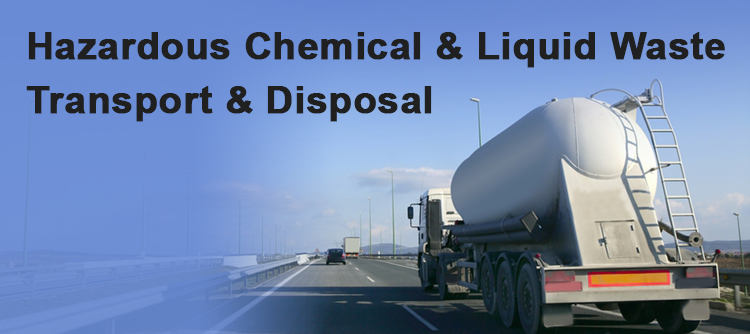Specialist Liquid Waste Removal Melbourne: Maintaining Your Environment Clean
Specialist Liquid Waste Removal Melbourne: Maintaining Your Environment Clean
Blog Article
How Liquid Waste Disposal Works: A Detailed Summary of Methods and Technologies Utilized

Introduction of Liquid Waste Kind
The complexity of liquid waste kinds demands a comprehensive understanding of their characteristics and ramifications for disposal. Liquid waste can extensively be categorized right into several types, including industrial, metropolitan, agricultural, and contaminated materials. Each category exhibits unique properties, requiring certain management strategies to reduce environmental and health threats.
Industrial liquid waste stems from producing procedures and typically includes a variety of impurities, such as hefty steels, solvents, and natural compounds. Local liquid waste, primarily making up wastewater from households and commercial establishments, consists of raw material, nutrients, and pathogens (industrial wastewater treatment). Agricultural liquid waste, including drainage from ranches, may include fertilizers, pesticides, and pet waste, presenting risks to water quality and environments
Harmful liquid waste is defined by its poisoning, sensitivity, or potential to cause damage. Recognizing these diverse fluid waste kinds is important for creating reliable disposal approaches and making certain conformity with environmental guidelines.
Physical Treatment Approaches

Screening is the initial action, where bigger bits and debris are removed from the fluid waste using displays or grates. In sedimentation tanks, much heavier fragments work out at the base, developing a sludge layer, while the cleared up fluid can be additional dealt with.
Filtering is an additional important technique that involves passing the fluid through porous products, such as sand or membranes, to catch smaller sized particles. This action enhances the high quality of the fluid, making it ideal for succeeding treatment processes.

Chemical Therapy Strategies
Chemical therapy techniques are crucial for successfully handling fluid waste, especially in dealing with dissolved and colloidal contaminants that physical techniques might not effectively get rid of. These methods utilize various chemical agents to counteract, precipitate, or transform dangerous substances into much less harmful forms.
One usual approach is coagulation and flocculation, where chemicals such as alum or ferric chloride are included in advertise the gathering of suspended particles. This process boosts sedimentation, allowing for much easier removal of the resulting sludge. Furthermore, oxidation processes, using agents like chlorine or ozone, are utilized to break down complicated organic compounds and microorganisms, providing the waste much safer for discharge or further treatment.
Neutralization is one more critical strategy, which changes the pH of acidic or alkaline waste streams to neutral degrees, avoiding prospective damage to downstream systems and the atmosphere. Additionally, advanced oxidation procedures (AOPs) use combinations of oxidants and ultraviolet light to break down consistent toxins, attaining a higher degree of More about the author therapy efficiency.
Organic Therapy Procedures
Organic therapy processes play a vital duty in the monitoring of liquid waste by utilizing microorganisms to decompose raw material and reduce pollutant degrees. These procedures can be broadly categorized right into anaerobic and aerobic therapies, each employing specific microbial areas to accomplish efficient waste degradation.
Aerobic therapy includes using oxygen to help with the malfunction of organic materials look at this now by germs. This process is commonly implemented in triggered sludge systems, where aeration containers give a conducive atmosphere for microbial development, causing the oxidation of organic pollutants. The resultant biomass can be separated from treated effluent via sedimentation.
On the other hand, anaerobic therapy happens in the absence of oxygen, depending on different germs to break down organic issue. This technique is specifically helpful for high-strength waste, as it creates biogas, a renewable resource source, while minimizing sludge manufacturing. Technologies such as anaerobic digesters are frequently employed in commercial and metropolitan applications.
Both anaerobic and cardio organic therapies not only decrease the environmental effect of liquid waste yet also help with resource recovery, making them vital parts of sustainable waste management methods. Their efficiency, efficiency, and adaptability support their extensive application across different fields.
Emerging Technologies in Disposal
Ingenious methods to liquid garbage disposal are swiftly progressing, driven by innovations in modern technology and a raising emphasis on sustainability. Amongst these emerging technologies, membrane bioreactors (MBRs) have actually gotten grip for their ability to integrate organic treatment with membrane purification, resulting in high-quality effluent that can be reused in different applications. MBRs enable smaller sized footprints and much more reliable operations contrasted to traditional systems.
One more appealing growth is the use of anaerobic food digestion integrated with nutrient healing modern technologies, which not just treats liquid waste however also produces biogas and recovers valuable nutrients like index nitrogen and phosphorus. This dual benefit boosts source efficiency and reduces environmental impact.
Furthermore, progressed oxidation procedures (AOPs) are being embraced for the deterioration of complex organic toxins. These approaches make use of powerful oxidants and drivers to damage down pollutants at the molecular level, providing an extremely reliable service for tough waste streams.
Moreover, the integration of man-made knowledge and artificial intelligence in waste administration systems is optimizing operational performance and predictive maintenance, bring about minimized expenses and enhanced environmental conformity. These technologies mirror a considerable change in the direction of more reliable and lasting liquid waste disposal methods.
Verdict
In verdict, effective liquid waste disposal necessitates a detailed understanding of different strategies and modern technologies. By constantly progressing these methods, it ends up being possible to deal with the growing obstacles linked with liquid waste, ultimately adding to ecological security and resource recovery.
Liquid waste disposal is an essential element of ecological management, requiring a detailed understanding of different strategies and modern technologies tailored to various waste types. Liquid waste can broadly be categorized right into several kinds, consisting of industrial, community, agricultural, and harmful waste. Agricultural liquid waste, including drainage from ranches, may have plant foods, chemicals, and pet waste, posing dangers to water quality and ecological communities.
Different physical treatment methods play a crucial duty in managing fluid waste properly - industrial wastewater treatment.In final thought, effective liquid waste disposal demands a comprehensive understanding of various techniques and innovations
Report this page